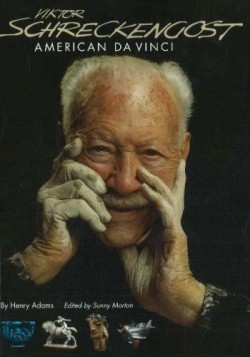Viktor Schreckengost
American Da Vinci
American artist Viktor Schreckengost turns 100 years old this year and has been lauded as “an American Leonardo da Vinci” due to his versatility as both a fine artist and an industrial designer. From the Art Deco Jazz Bowl that Schreckengost originally created for Eleanor Roosevelt in 1930 to the various dinnerware patterns that he designed for different American manufacturers from the 1930s to the 1950s, the artist displayed extraordinary breadth of talent, as the author’s descriptions demonstrate.
Adams is Professor of American Art at Case Western Reserve University in Cleveland, Ohio. He formerly held curatorial and directorial positions at several art museums, including the Carnegie Museum of Art in Pittsburgh and the Nelson-Atkins Museum of Art in Kansas City. Art News recently named Adams one of the top experts in the American art field, and he has published more than 200 titles on American art.
Jazz Bowl, a parabolic ceramic punch bowl depicting an evening on the town in New York, is one of the artist’s most famous pieces, but Schreckengost made exceptional use of many artistic media. He explored ceramic forms such as plates, vases, and sculpture, and created huge—twenty-five by twelve feet—mastodon and mammoth reliefs for the Cleveland Zoo. Along with sculpting in clay, Schreckengost formed busts to be cast in metals, such as Jeddu and Mangbettu Child, both based on photographs from Africa. He was prolific in two-dimensional works, and experimented with pen-and-ink, batik, oils, and watercolors. He even delved into costume and set design.
Adams shows that as well as evolving as a fine artist, Schreckengost simultaneously applied his design ideas to mass production. “If they sold 600,000 of something,” the artist reported, “I felt I was on the right track.” He traveled frequently to Europe and was undoubtedly affected by design movements there, such as the Wiener Werkstatte and the Bauhaus, since he strived to implement simple and powerful shapes with a machine-made look. Schreckengost influenced industrial design in trucks the cab-over-engine truck), bicycles the Mercury bicycle), and toys the Pursuit Plane pedal car). He also created many decorative dinnerware patterns for companies such as American Limoges.
Overflowing with beautiful images of Schreckengost’s work, the book is more of an art catalogue with interesting commentary rather than a biography; details about Schreckengost’s life are interspersed throughout, and are included only if relevant to his art or design products. Adams fittingly finishes with a listing of venues for The Viktor Schreckengost National Centennial Exhibition in which the artist’s works are being shown in locations ranging from his local barbershop to the Art Institute of Chicago.
A fitting tribute to an artist who was able to apply his creativity successfully to the practical realm of industrial design, the book is inspirational to all who look for beauty in everyday items.
Reviewed by
Beth Hemke Shapiro
Disclosure: This article is not an endorsement, but a review. The publisher of this book provided free copies of the book to have their book reviewed by a professional reviewer. No fee was paid by the publisher for this review. Foreword Reviews only recommends books that we love. Foreword Magazine, Inc. is disclosing this in accordance with the Federal Trade Commission’s 16 CFR, Part 255.

